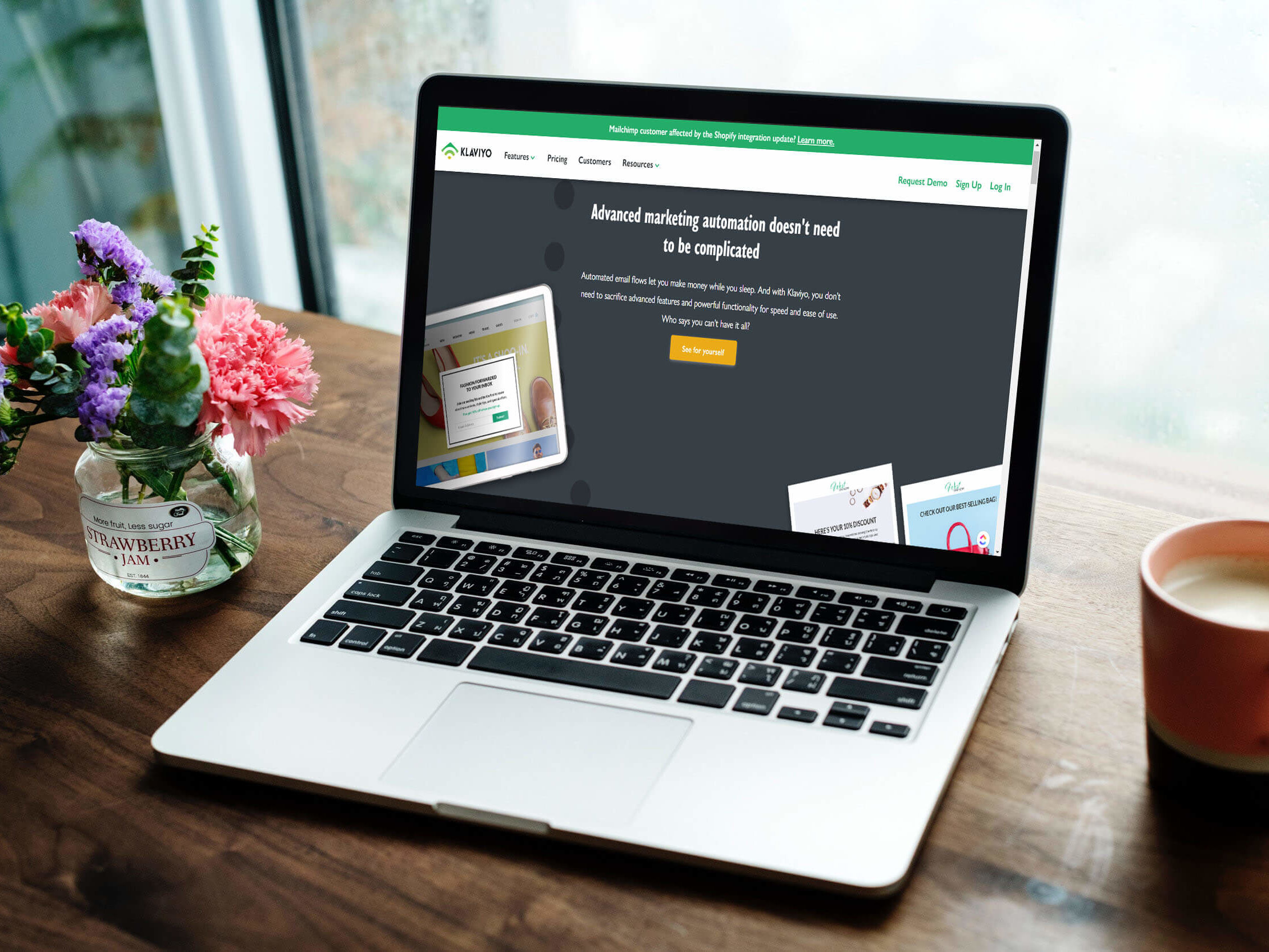How Automated Email Marketing Campaigns Boost Sales in Your Shopify Store

You save time and your customers get more value.
Let’s start with an example, which should help clarify what email automation and segmentation do in the real world.
Bob is a prospect that visits your store…
Unfortunately, Bob is a penny-pincher, and he needs to know every single detail before he makes his purchase. So, when Bob finally makes his way over to your website and cautiously enters his email into one of your forms (landing page, newsletter, coupons, etc.), he is greeted with a warm welcome message.
Of course, he reads the message (82% of people do!) adds an item to his cart (which he then second guesses himself on,) and leaves quietly.
The next day, Bob wakes up to find an email reminding him that he has left an item in your cart (cart abandonment rates are 68%!).
He decides to buy it! Yay! Now, Bob is a certified customer, which means that he is getting that “Thank You” email!
Another week passes, and Bob sees a new email come through. It’s an email telling Bob about a new product.
He doesn’t click it.
This means that he won’t be receiving further emails detailing different things about the product (everyone who clicked it will.)
The next week he gets another email. This time it’s about a local concert where they will be selling your products! How cool!

Bob is getting hyper-relevant emails sent to him at critical stages in his buyer’s journey.
This is marketing automation and segmentation in action.
That’s just a sample of marketing segmentation basics as well, you can send emails to customers using simple metrics like demographics as well as complex metrics like types of content viewed and website interactions — and everything in-between.
There’s a lot of power in email automation. All of your customer’s data (interactions, clicks, engagements, etc.) can be used to create campaigns based on customer-triggers that go far beyond the example above. All of these data points that your customers generate on your website transform into little nuggets of gold that you can scoop up to melt down.
You can then use that melted gold to send them a gold brick of an email.
Let’s take a look at some marketing automation and segmentation statistics that may help solidify the point.
- Automated emails have a 114% higher click-through rate than broadcast (everyone gets the same message) emails
- Businesses that utilize marketing automation are 113% more likely to connect with customers throughout the sales cycle.
- Segmented and personalized emails generate 18x more revenue than broadcast emails!
- Companies who are already using automation will see up to 6x higher revenue if they segment their emails.
The end result is that marketing automation and segmentation work — they just do.
One-size certainly does not fit all. <bIt’s time to deliver a more nurturing experience to your shoppers.
But how?
What marketing automation and segmentation tools do you use?
MailChimp vs Klaviyo
When it comes to email automation and segmentation tools, MailChimp is the household name.
It’s used by small businesses, huge enterprises, agencies, and, yes, even Shopify businesses.
But, we don’t recommend MailChimp for Shopify owners.
Why do we prefer Klaviyo?
Klaviyo is also a popular email automation tool, but it’s Shopify specific — which gives it a few options that MailChimp simply doesn’t have for business owners who use Shopify.
It was built from the ground up to be a tool to help Shopify store owners drive more sales. MailChimp is designed to be a multi-purpose tool that is more one-size-fits-all.
Both of these email automation platforms have everything that you need to automate emails, segment data, create customer-built triggers, and effortlessly create marketing campaigns on the fly — all of which are critical.
But if you were a chef trying to fillet a choice fish, would you want to do it with a multi-purpose, one-size-fits-all, swiss-army knife?
Or would you want a well-crafted knife especially suited to cutting perfect fillets?
The reason that we recommend Klaviyo to our customers is that Klaviyo seamlessly integrates data with Shopify.
We are talking extremely detailed data about every interaction, browse, purchase, engagement, and contact point that updates instantly and is intuitively tied to your Shopify platform.
What can you do with all of this data?
Well, instead of sending an abandoned cart email, you can send an abandoned cart email based on purchase behaviors, cart value, purchase history, and other data points.
The end result is a more personalized message that’s sent to each customer.
We have nothing against MailChimp. It’s a fantastic service, Klaviyo just runs better on Shopify, and it makes your customer data much easier to consume and ultimately use.
Some Examples
So, what can you do with all of this customer data? Here are a few examples of segmentation campaigns that you could potentially run.
- Send emails to prospects based on their purchase size. So, send emails about your new exclusive products to customers that have higher purchase sies, and send those budget-friendly coupon-stuffed emails to your savvy shoppers.
- Send customers content that’s relevant to their purchase history. Do some of your customers have a history of buying watches on your clothing website? Your email automation software can send them emails that feature watches that are on sale.
- Send emails to customers who haven’t purchased anything in a few months (with a bonus coupon!)
- Send emails to frequent buyers asking for feedback. The more they shop, the more likely they are to want to give feedback.
There’s so much more you can do with email automation and segmentation. These are a just a few quick examples.
Conclusion
Email automation and segmentation software can turn all of your emails into winners.
Stop sending all of your prospects & customers the same emails.
Instead, send them relevant emails that add value to their shopping experience. The result will be a more fulfilling relationship that’s naturally nurtured.

 Ryan Kodzik
Ryan Kodzik 

